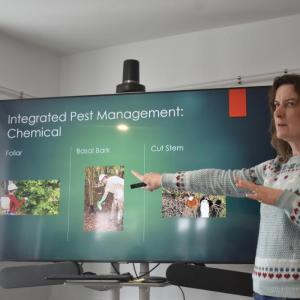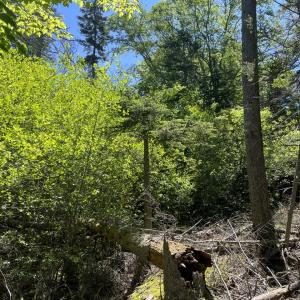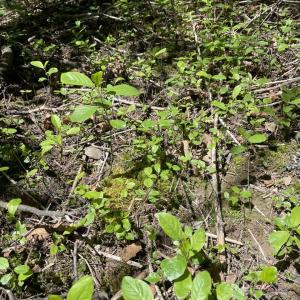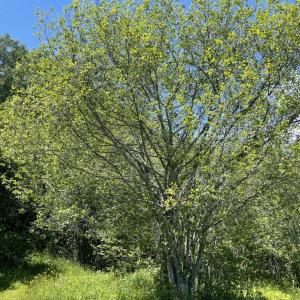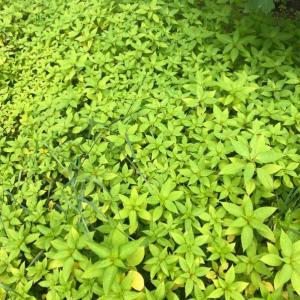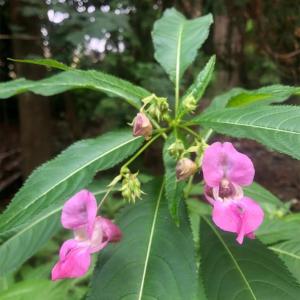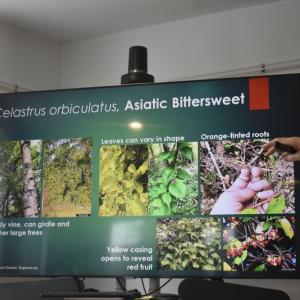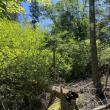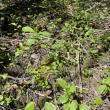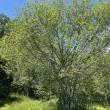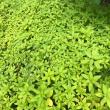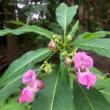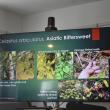Gardeners, property owners ... Meet your nemeses!
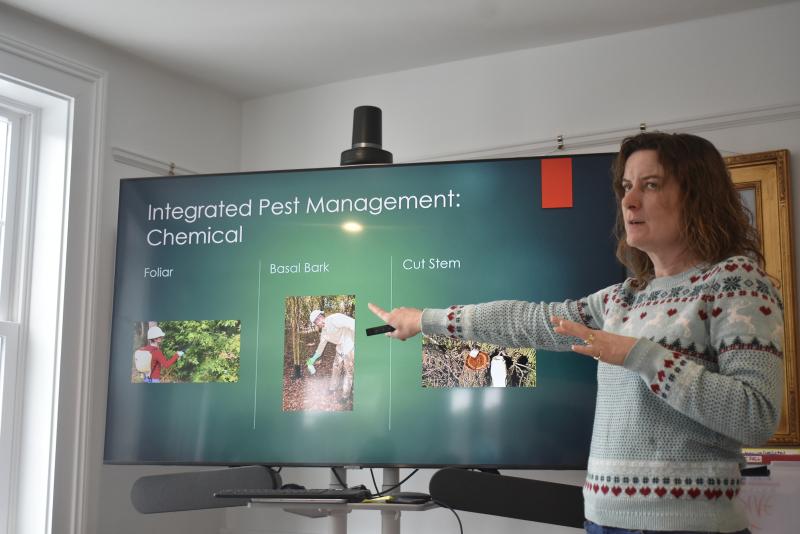 Rebecca Jacobs of Knox-Lincoln Soil & Water Conservation District speaks at Oak Point Farm in mid-February. LISA KRISTOFF/Boothbay Register
Rebecca Jacobs of Knox-Lincoln Soil & Water Conservation District speaks at Oak Point Farm in mid-February. LISA KRISTOFF/Boothbay Register
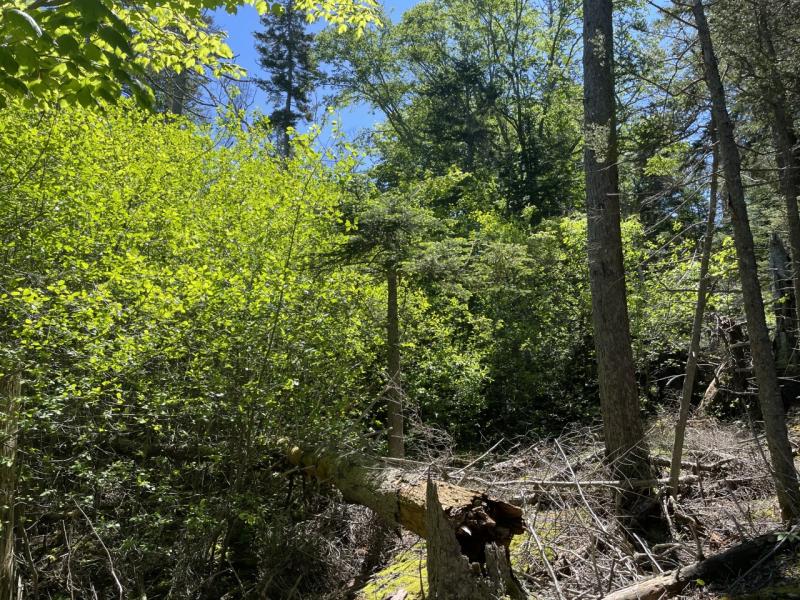 Complete understory in woodlands of glossy buckthorn. Courtesy of Knox-Lincoln Soil & Water Conservation District
Complete understory in woodlands of glossy buckthorn. Courtesy of Knox-Lincoln Soil & Water Conservation District
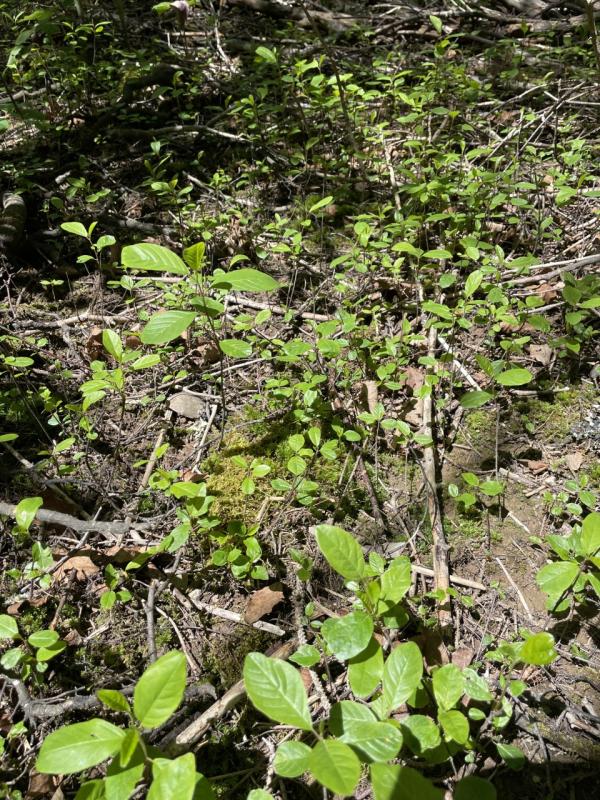 Glossy buckthorn seedlings. Courtesy of Knox-Lincoln Soil & Water Conservation District
Glossy buckthorn seedlings. Courtesy of Knox-Lincoln Soil & Water Conservation District
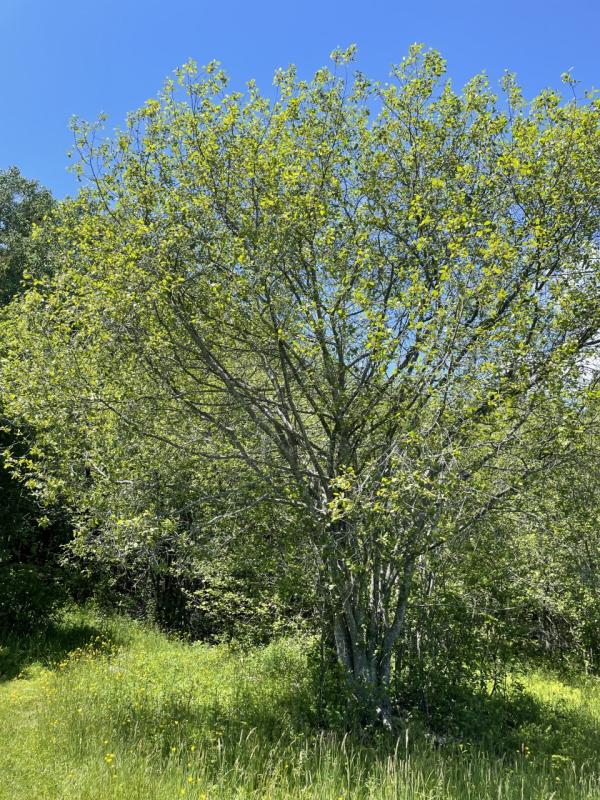 Glossy buckthorn. Courtesy of Knox-Lincoln Soil & Water Conservation District
Glossy buckthorn. Courtesy of Knox-Lincoln Soil & Water Conservation District
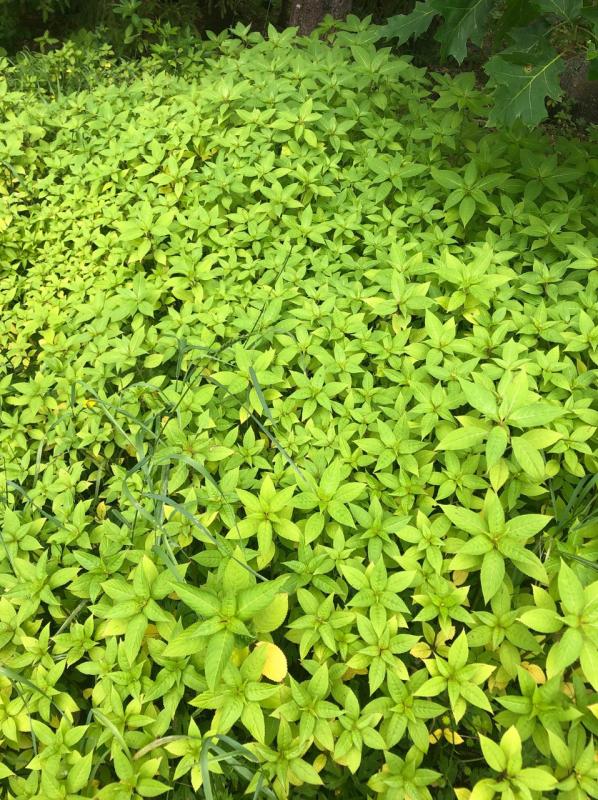 Himalayan balsam before flowering. Courtesy of Knox-Lincoln Soil & Water Conservation District
Himalayan balsam before flowering. Courtesy of Knox-Lincoln Soil & Water Conservation District
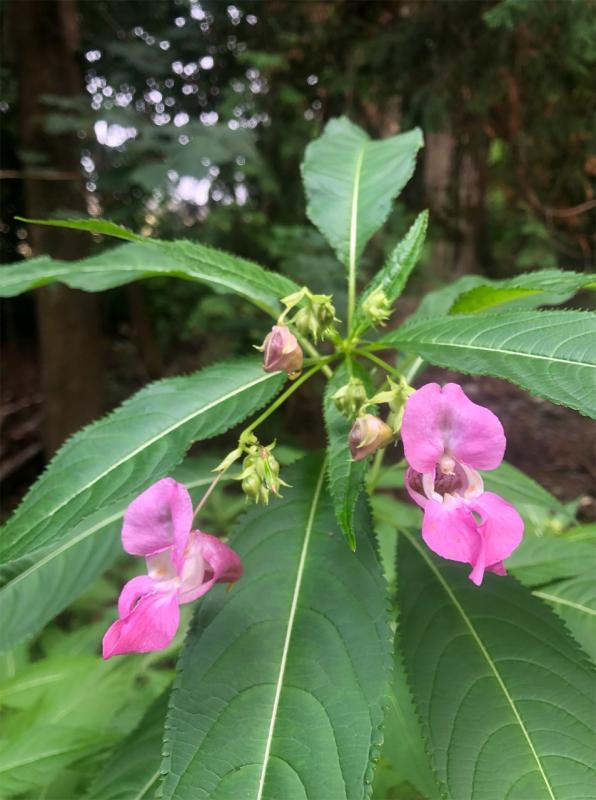 Flowering Himalayan balsam, also known as pink touch-me-not. Courtesy of Knox-Lincoln Soil & Water Conservation District
Flowering Himalayan balsam, also known as pink touch-me-not. Courtesy of Knox-Lincoln Soil & Water Conservation District
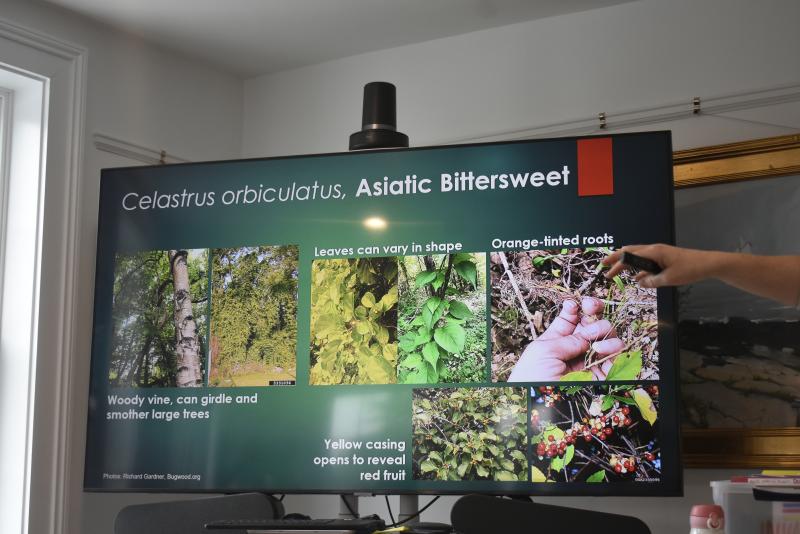 The Asiatic bittersweet info image at the presentation.
The Asiatic bittersweet info image at the presentation.
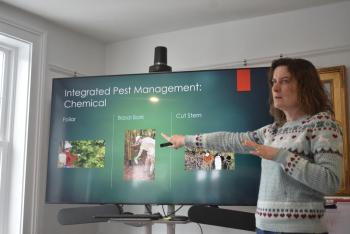 Rebecca Jacobs of Knox-Lincoln Soil & Water Conservation District speaks at Oak Point Farm in mid-February. LISA KRISTOFF/Boothbay Register
Rebecca Jacobs of Knox-Lincoln Soil & Water Conservation District speaks at Oak Point Farm in mid-February. LISA KRISTOFF/Boothbay Register
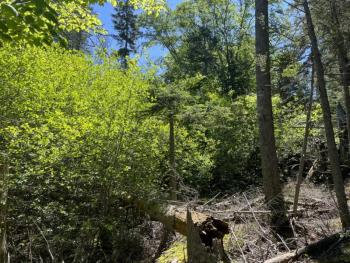 Complete understory in woodlands of glossy buckthorn. Courtesy of Knox-Lincoln Soil & Water Conservation District
Complete understory in woodlands of glossy buckthorn. Courtesy of Knox-Lincoln Soil & Water Conservation District
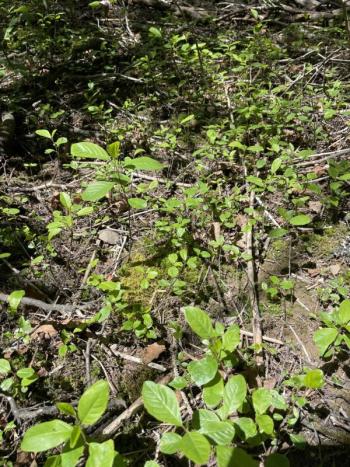 Glossy buckthorn seedlings. Courtesy of Knox-Lincoln Soil & Water Conservation District
Glossy buckthorn seedlings. Courtesy of Knox-Lincoln Soil & Water Conservation District
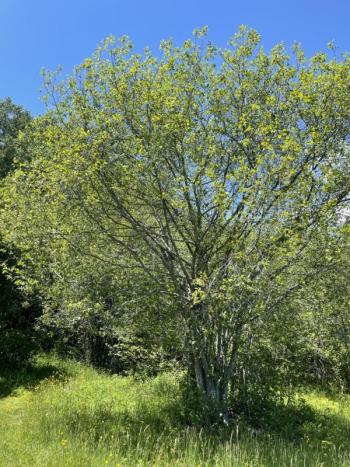 Glossy buckthorn. Courtesy of Knox-Lincoln Soil & Water Conservation District
Glossy buckthorn. Courtesy of Knox-Lincoln Soil & Water Conservation District
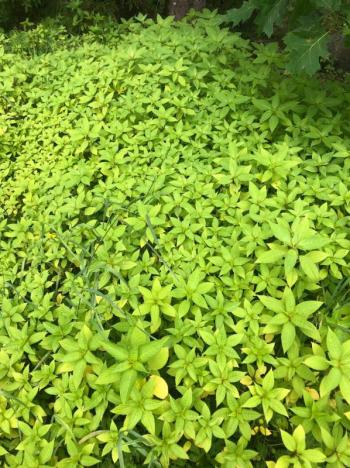 Himalayan balsam before flowering. Courtesy of Knox-Lincoln Soil & Water Conservation District
Himalayan balsam before flowering. Courtesy of Knox-Lincoln Soil & Water Conservation District
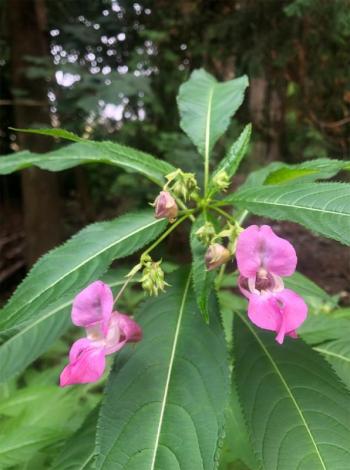 Flowering Himalayan balsam, also known as pink touch-me-not. Courtesy of Knox-Lincoln Soil & Water Conservation District
Flowering Himalayan balsam, also known as pink touch-me-not. Courtesy of Knox-Lincoln Soil & Water Conservation District
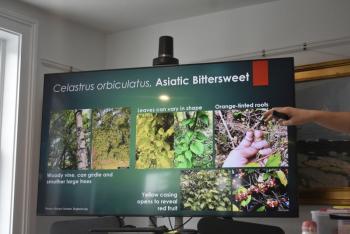 The Asiatic bittersweet info image at the presentation.
The Asiatic bittersweet info image at the presentation.
Spring arrived March 20 at 5:24 p.m. here on the East Coast. And you know what that means: time to get outdoors and uncover those gardens, once all the snow melts, that is! And most likely, there are those plants you cannot identify, that have been part of your personal landscape for years, decades, maybe, but you really like the flowers.
Last month, Boothbay Region Land Trust welcomed Rebecca Jacobs of Knox-Lincoln Soil & Water Conservation District to Oak Point Farm. At the start, she told attendees that soil and water conservation districts were a direct result of the Dust Bowl. In 1937, President Franklin Roosevelt suggested state governors permit landowners to create conservation districts to prevent further erosion of the land – and another Dust Bowl – as close to three-fourths of land in the U.S. is privately owned.
Jacobs shed some light on local invasive plants that just might be among some of those flowering, attractive plants in your yard. These plants, trees and shrubs are the same ones she had been battling in Massachusetts and Vermont. She also explained that not all non-native varieties are bad. “We have thousands and thousands of successful, naturalized plants and the majority of non-native plants are not invasive,” said Jacobs. “But there are those non-native plants that displace native plants, shifting their habitats, their ecosystems. These varieties also cause harm to humans by impacting the natural landscape and our economic resources.”
These non-native species arrived in Maine in a variety of ways: They were imported to the U.S. from Europe, or from Asia, such as from Japan, for ornamental and landscaping purposes, by people not realizing the damage these could cause to the environment once planted. These plants are further spread by wildlife. Many of these species are very attractive, and are among those that have naturalized, while others are, as Jacobs described, “bullies.”
Japanese knotwood. One of these “bullies” is Japanese knotwood. It has heart-shaped leaves and produces white spiky flowers on hollow stems and is spread by underground runners. Jacobs noted that in the UK, homeowners cannot sell their property if there is Japanese knotwood on it. Bees love it. A black-colored honey is produced from this plant, which makes it desirable for culinary purposes – but it is not desirable from an environmental standpoint.
Norway maple. A key species being found on the Boothbay peninsula and the Midcoast – widely grown and was distributed in the horticultural industry. Jacobs said it, or its cultivars, can no longer be sold in Maine. It flowers yellow; prefers wet and mid and upland sites where Maine’s native sugar maples grow and it seeds prolifically! It has larger palmate (shaped like your hand and fingers) and its leaves have more points than Maine’s sugar maples.
“It is extremely shade tolerant,” Jacobs said. “It’s eliopathic ... excreting a toxin into the soil that displaces the seed bank of native species and encourages the appropriate ph for its own species. The bark is craggier with light fissures in a light brown trunk. In fall, the color is a dull yellow, If you snap a leaf off it oozes a thick white sap. If you snap a sugar or red maple leaf, it oozes a clear sap. After 15 years, it’s hard to distinguish them by bark and leaf.”
Glossy buckthorn. Ironically, this plant does not have thorns, but it can fruit and flower simultaneously. It produces white flowers and in habitat looks similar to a young dogwood, alder, or winterberry. It is a prolific seeder. Jacobs noted how inconspicuous glossy buckthorn is so it can be around for decades until someone notices. “All of a sudden in Rockport, and other places, there’s a monoculture of this plant. You look at a horizon line and it’s glossy buckthorn.” It has blood red roots, very distinct. The Northeast forest service is particularly concerned about this one because it is so inconspicuous; birds eat the seed and then disperse them as they fly.
Japanese barberry. Came in with horticulture cultivars for its mottled and yellow leaves. It, too, can no longer be sold in Maine. It is very thorny, and its branches have an irregular growth pattern. Ticks love them as they offer a moist, dark cover. Mammals brushing through them – deer, mice, etc. get the ticks and seeds on them and take them to other places.
Autumn olive. A scraggly shrub preferring open habitat. Even from a distance, its white-silverish tinge, which Jacobs likened to a the silvery underside of a silver maple, makes it a highly distinguishable shrub. Extremely thorny often all the way to the tips of the branches. Bell-shaped flowers. It is found along the roadside and the edge of woodland areas, not in the woods because this one likes sunlight. It also prefers disturbed sites, abandoned farms and fields; it can be carried to your yard on the bottom of your shoes!
Burning bush. Despite its ornamental appeal with its bright red foliage, which is why it was imported, spreads quickly pushing out native species. Birds and mammals do not eat any part of this shrub, so it deprives native species of food. Jacobs worked in Massachusetts many years before coming to Maine and did a lot of work in Connecticut and Massachusetts working with leading experts to try to get the Burning bush on the invasive list. In 2017, it was added to that list in Maine.
Asiatic bittersweet – Woody vine. It is preferred that it be cut as high up as you can reach, then leave the mass of vine in the tree. It will adapt. It would cause more damage to the tree to rip the rest of the mass out. The trees, for the most part, will recover. Produces flowers and berries in fall that are red and orange. The roots are bright orange.
Garlic mustard. Jacobs calls this one “a bugger of a plant” that is “the bane of (her) existence!” Leaves are rounded, more like scalloped rosettes when young. In its second year, the rosette comes out and stems up with pinkish-white trianglular toothy leaves along the stems. Hugely prolific seeds, but easy to pull, Jacobs said. “You can just pull it out making it rewarding, because it was there – and now it’s gone!”
Other invasive varieties discussed: Shrubby honeysuckle, Morrow’s honeysuckle, rose multiflora, bitter nightshade, Himalayan balsam, bishops weed, orange impatiens/touch me knot.
It will take years to eradicate these invasive species, and others – yes, there are more. What are your choices beyond pulling up young sprouts or cutting with jungle-like effect? You can go the eco-friendly route. Goats are good, depending on the species; you can leave the pulled or cut plants onsite and burn them; or better yet, put the plants all in a black trash bag and solarize it (leave it in the sun) before bringing it to the landfill. Foliar herbicides are applied to the leaves or stems of plants to be absorbed and carried throughout the plant. They are common and widely used to control annual and perennial herbs and also woody shrubs. For those not adverse to the use of pesticides, Jacobs recommended hiring a professional.
“You learn the hard way to wear long sleeves, pants, gloves and a hat. I have got my hair cut in thorny things even in a ponytail while wearing a hat. Wear hiking boots or other boots – no sneakers or sandals; and hats with brims. Always keep your tools clean and sharp – those bleach wipes work well.”
To see images of all the plants Jacobs discussed, visit www.knox-lincoln.org/invasive-plants. To learn more about all the invasive species and how best to deal with them, visit www.knox-lincoln.org

